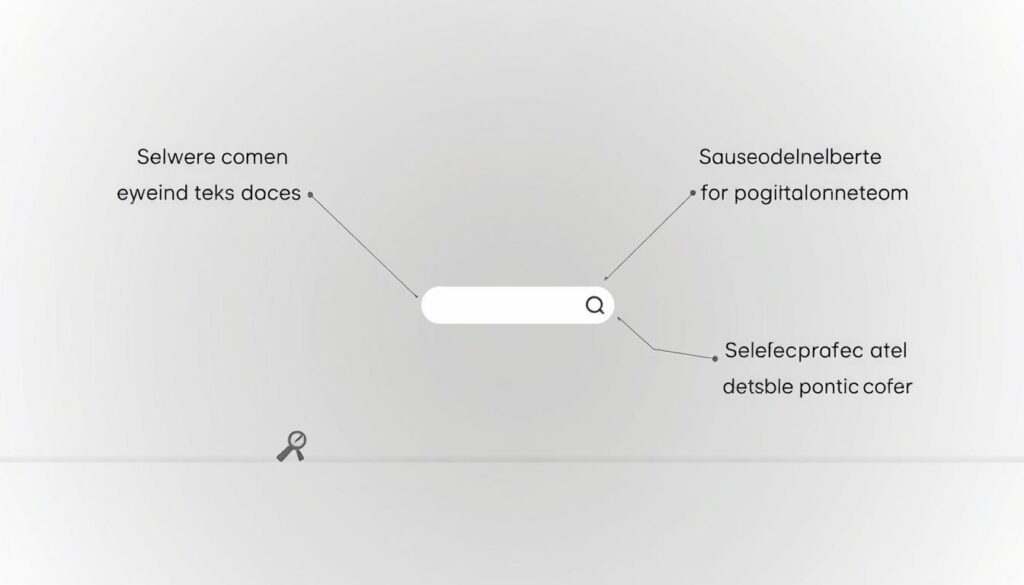Ever wonder how websites appear at the top of search results? That’s the magic of search engine optimization – a practice that helps businesses grow their online visibility without paid ads. By optimizing your site’s content and technical setup, you’re essentially speaking Google’s language to earn better rankings.
Search engines use complex algorithms to evaluate websites. They look at factors like content quality, page speed, and user experience. When your site meets these standards, you get rewarded with more organic traffic – visitors who find you naturally instead of through ads.
Why does this matter? Because free traffic from high rankings keeps working for you 24/7. Unlike paid campaigns that stop delivering results when the budget runs out, strong SEO creates lasting value. It’s like building a highway between your business and potential customers.
Whether you’re running a local shop or an e-commerce giant, understanding these principles helps you compete online. The best part? You don’t need to be a tech expert. Start with clear content that answers people’s questions and ensure your website loads quickly on all devices.
Key Takeaways
- SEO helps websites rank higher in organic search results
- Search engines prioritize user-friendly websites with valuable content
- Technical optimization improves site performance for both users and crawlers
- Organic traffic requires no ongoing advertising costs
- Effective strategies work for businesses of all sizes and industries
- Combining content quality with technical tweaks delivers best results
Introduction to SEO and Its Importance
Organic search traffic powers modern business growth. Over 78% of website visits come from unpaid results, according to recent studies. This makes technical SEO and user-friendly design non-negotiable for staying competitive.
Small businesses and global brands alike benefit from capturing engaged visitors. Secure sites using HTTPS see 15% higher trust signals from search engines. Mobile optimization cuts bounce rates by 40% on average, keeping users scrolling longer.
Think of user experience as your digital handshake. Pages that load in under two seconds and offer clear navigation convert 25% more visitors. A local bakery doubled online orders after restructuring their menu for easier mobile browsing.
Quality website content acts as your 24/7 sales team. One outdoor gear retailer boosted revenue by 68% by aligning product descriptions with customer search habits. Search algorithms reward pages that answer questions thoroughly while using natural language.
Prioritizing these elements isn’t just about rankings – it’s about building relationships. When technical foundations and human-centered design work together, businesses unlock sustainable growth without relying on ads.
Understanding what seo means for Your Business

Businesses thriving online share one secret: their content speaks directly to customer needs. Search engine optimization turns this alignment into visibility by organizing websites for both users and algorithms. It combines three pillars—on-page tweaks, technical improvements, and off-page credibility—to earn higher rankings.
Defining SEO and Its Core Principles
Effective strategies blend keyword research with understanding what users seek. For example, a Portland coffee shop tripled website visits by targeting phrases like “organic cold brew near me” instead of generic terms. This approach matches search intent while answering specific questions.
Common Misconceptions About SEO
Many believe rankings improve overnight. Reality? Sustainable growth takes 3-6 months. Another myth claims stuffing pages with keywords works—modern algorithms penalize this. Focus instead on natural language and solving problems.
| Myth | Reality |
|---|---|
| SEO delivers instant results | Consistent effort yields gradual improvements |
| More keywords = better rankings | Quality content aligned with intent matters most |
| Technical setup isn’t crucial | Site speed and mobile design impact 40% of rankings |
A Midwest bakery saw 70% more traffic after optimizing product pages for local search intent. They used on-page SEO tactics like clear headers and meta descriptions while keeping content conversational. This balance helps search engines and humans alike.
How Search Engines Discover and Rank Content
Behind every online search lies a complex discovery process. Search engines act like digital librarians, constantly mapping and organizing web content. Their systems determine which pages deserve prime real estate in search results through three core stages.
Crawling, Indexing, and Ranking Explained
Automated bots called crawlers explore the web through hyperlinks, following paths between pages like road trips. Google’s crawlers visit over 130 trillion web pages, using sitemaps and internal links to find new content. Think of this as scouts charting unknown territory.
Indexing comes next. Here, search engines sort discovered pages into a massive library. They analyze text, images, and structured data to understand context. Pages missing proper tags or loading slowly often get stored in less accessible sections.
Key Ranking Factors and Algorithms
When you type a query, algorithms evaluate three main elements. Relevance checks if content matches user intent. A bakery blog mentioning “gluten-free recipes” 15 times won’t rank if it ignores baking techniques. Authority measures trust through backlinks – 63% of top-ranking pages have at least 50 quality references.
User behavior seals the deal. Pages keeping visitors engaged with fast load times (under 2 seconds) and clear answers gain favor. Google’s BERT algorithm now prioritizes natural language over keyword stuffing. Tools like Lighthouse help track these metrics.
Understanding this process helps businesses create crawler-friendly sites. Optimize internal linking, use schema markup, and focus on genuine value. These steps make your content easier to find and rank higher organically.
The Role of On-Page SEO in Organic Visibility
Imagine your website as a puzzle where every piece helps users find you. On-page elements like headers and meta tags act as guideposts for search engines. These components clarify your content’s purpose while matching what people search for.

Keyword Optimization and Content Strategy
Strategic keyword use makes your content discoverable. Focus on phrases your audience actually types into search bars. A bakery might target “gluten-free pastries in Boston” instead of generic terms like “baked goods.” Tools like AnswerThePublic reveal questions people ask about your topic.
Balance keyword placement naturally. Overusing terms triggers penalties – aim for 1-2% density. Write for humans first, then refine for algorithms. Pages answering specific queries rank higher because they satisfy user intent.
Optimizing Meta Tags and Headers
Meta titles and descriptions are your first impression. Keep titles under 60 characters and include primary keywords. Descriptions should entice clicks with clear benefits: “Learn 5 proven gluten-free baking techniques” outperforms vague statements.
Header tags (H1-H6) organize content like chapters in a book. Use H2s for main sections and H3s for subtopics. Search engines scan headers to understand your page’s structure. A camping gear site improved rankings by 40% after restructuring product guides with descriptive headers.
Remember: Small tweaks create big impacts. Test different meta tags and monitor traffic changes using free tools like Google Search Console.
Technical SEO: Site Architecture and Mobile Optimization
Think of your website as a digital blueprint – its structure determines how easily search engines understand and navigate your content. Clear site architecture acts like signposts, guiding both users and crawlers to key pages. A travel blog increased organic traffic by 52% after simplifying their category hierarchy from six layers to three.
Building Roads for Digital Crawlers
Proper internal linking creates pathways that help search engines discover your most valuable pages. XML sitemaps act as treasure maps, listing every page you want indexed. Combine this with breadcrumb navigation to reduce crawl errors by up to 37%. Tools like Screaming Frog identify broken links that confuse algorithms.
Speed Meets Mobile-First Design
With 68% of searches happening on phones, mobile optimization is non-negotiable. Pages loading in 1.3 seconds see 35% lower bounce rates. Compress images, leverage browser caching, and use Accelerated Mobile Pages (AMP) for instant loading. Google’s Core Web Vitals now prioritize user experience metrics like interactivity delays.
| Factor | Desktop Optimization | Mobile Optimization |
|---|---|---|
| Page Speed | Under 3 seconds | Under 2 seconds |
| Design Approach | Standard layouts | Thumb-friendly buttons |
| Content Delivery | High-res images | Compressed media |
Avoid duplicate content by using canonical tags and updating meta robots.txt files. Regularly audit your site with free tools like Google Search Console to maintain peak performance across devices. Remember: Technical tweaks that help search engines also create smoother experiences for real people.
Off-Page SEO: Building Authority with Quality Links

Your website’s reputation isn’t just built on its content—it’s shaped by who vouches for it. Off-page SEO focuses on earning quality links from trusted sources, signaling to search engines that others value your information. These digital endorsements work like personal recommendations in real life.
Effective link building strategies start with creating shareable content. A sustainable fashion brand gained 92% more organic traffic after industry blogs linked to their eco-friendly manufacturing guide. Tools like HARO connect businesses with journalists seeking expert insights, creating natural linking opportunities.
Developing a Robust Link Building Strategy
Focus on relevance over quantity. A local gym doubled membership inquiries by securing links from health podcasts and community websites. Google’s guidelines state: “Links should be earned through great content, not bought or traded.”
Digital marketing efforts like social media campaigns and email newsletters amplify content reach. Collaborate with influencers in your niche—their audience becomes your potential linking partners. Always prioritize websites with strong domain authority and topical alignment.
Practical outreach tips:
- Personalize connection requests with specific compliments
- Offer unique data or case studies journalists can reference
- Update broken links on authoritative sites with your content
Remember: Authentic relationships drive lasting results. A tech startup secured 37 high-value links in six months by consistently sharing actionable industry reports. These efforts compound over time, creating sustainable growth in organic visibility.
Optimizing User Experience to Boost SEO
Did you know 88% of online visitors abandon sites after poor experiences? Smooth navigation and fast interactions keep users engaged – and search engines notice. Pages with intuitive layouts see 50% longer visit durations, directly impacting organic rankings.
Design That Guides, Not Confuses
Clear menus and visual hierarchy help users find answers quickly. An outdoor gear retailer redesigned their product filters, resulting in 33% more page views per session. Use contrasting colors for CTAs and ensure clickable elements are thumb-friendly on mobile.
Speed Meets Accessibility
Mobile-first design isn’t optional – 68% of traffic comes from phones. Compress images without quality loss and enable AMP for instant loading. A recipe blog cut load times from 4s to 1.2s, doubling ad revenue through increased scroll depth.
Three quick wins:
- Test forms on real devices – simplify fields until completion rates hit 70%+
- Add breadcrumb navigation to reduce bounce rates by 19%
- Use alt text for images to improve accessibility and keyword relevance
Remember: Every second saved in load time increases conversions by 11%. Prioritize website elements that create frictionless journeys, and watch search rankings climb alongside customer satisfaction.
Effective Keyword Research Strategies for SEO
What fuels the engine of online visibility? Targeted keyword research acts as your roadmap to connect with audiences actively seeking your solutions. By identifying phrases people use in search engines like Google, you create content that bridges their questions with your expertise.
Tools and Techniques for Discovering Keywords
Start with tools like Semrush or Moz to uncover hidden opportunities. These platforms analyze search volume, competition levels, and related terms. For example, a coffee shop might discover “oat milk latte near me” has 3x more searches than “coffee drinks” in their area.
Effective strategies follow three steps:
- Analyze competitor pages to identify gaps in their keyword coverage
- Group terms by intent (informational vs. transactional)
- Prioritize phrases with manageable competition and steady search volume
| Tool | Key Feature | Best For |
|---|---|---|
| Semrush | Competitor gap analysis | Local businesses |
| Moz Keyword Explorer | Difficulty scoring | Content creators |
| Ahrefs | Click-through rate data | E-commerce sites |
Search trends reveal seasonal opportunities. A garden supply store increased summer sales by 45% after targeting “drought-resistant plants” when regional heatwaves spiked. Tools like Google Trends highlight rising queries before they become competitive.
Balance data with creativity. “Long-tail keywords often convert better because they match specific needs,” notes a marketing strategist. Phrases like “organic dog treats for sensitive stomachs” attract ready-to-buy visitors, even with lower search volume.
Leveraging SEO Tools for Data-Driven Insights
Data transforms guesswork into actionable strategies. Modern marketers use specialized tools to track performance, spot trends, and refine their approaches. These platforms reveal how audiences interact with content and which efforts drive real results.
Popular SEO Software and Analytics Tools
Platforms like Semrush and Moz provide insights into keyword rankings, backlink quality, and competitor strategies. Google Search Console tracks technical health, while Screaming Frog audits site structure. For search engine marketing campaigns, tools like Ahrefs monitor paid and organic performance side by side.
Key metrics to watch:
- Organic click-through rates for target keywords
- Page load speeds across devices
- Bounce rates indicating content relevance
Integrating Google Analytics into Your Strategy
Google Analytics acts as your digital compass. Set up custom goals to track conversions, from newsletter sign-ups to product purchases. The platform’s Behavior Flow report shows how users navigate your site, highlighting pages that need optimization.
Engines like Google prioritize sites delivering value. Use analytics to identify:
- Top-performing content for expansion
- Mobile usability issues affecting 40%+ of visitors
- Seasonal traffic patterns to time content updates
Combining these tools creates a feedback loop. Adjust strategies based on real user data rather than assumptions. As one e-commerce manager noted: “Analytics helped us redirect 60% of our budget to high-converting product pages.”
Creating SEO-Friendly Content and Meta Optimization
Great content acts like a magnet, pulling readers in while signaling its value to search algorithms. Pages combining clear structure with strategic optimization see 47% longer engagement times, according to recent data. This dual focus helps users find answers while guiding crawlers to prioritize your work.
Writing Engaging and Structured Content
Start by mapping user intent. A cooking blog increased traffic by 62% after organizing recipes into step-by-step guides with ingredient FAQs. Use headers to break up text and bullet points for quick scanning. Descriptive alt text for images helps visually impaired users and improves context for crawlers.
Social media shares boost visibility. Content with numbered lists gets 3x more retweets than plain paragraphs. Tools like Clearscope analyze top-performing articles to identify missing subtopics. Always answer the “why” behind questions to build trust.
Crafting Compelling Titles and Meta Descriptions
Titles under 60 characters with primary keywords perform best. Compare these approaches:
| Optimized | Unoptimized |
|---|---|
| “5 Budget-Friendly Meal Prep Hacks (2024 Guide)” | “Cooking Tips Article” |
| Includes number + year | Too vague |
| 57 characters | 16 characters |
Meta descriptions should tease value while using natural language. Pages with custom descriptions see 35% higher click-through rates in search results. Include calls-to-action like “Discover time-saving techniques” to encourage visits.
Three quick wins for creators:
- Test headlines with free tools like Sharethrough Headline Analyzer
- Add schema markup to recipes/product pages for rich snippets
- Update old posts with new alt text and meta data
When shared on social media, optimized titles become clickable previews. This dual-purpose approach makes every piece work harder in both organic and social channels.
Tracking and Measuring SEO Performance
How do you know if your optimization efforts are paying off? Measuring success requires tracking the right metrics and adapting based on data. Over 74% of marketers say regular performance reviews separate thriving sites from stagnant ones.
Setting Up Metrics with Analytics Tools
Start by connecting Google Search Console and Analytics to your site. These tools reveal which keywords drive traffic and where visitors lose interest. Pages with 50%+ bounce rates often need better content alignment with search intent.
Three essential metrics to monitor:
- Organic traffic growth month-over-month
- Average position improvements for target keywords
- Conversion rates from search visitors
| Tool | Primary Metric | Best Use Case |
|---|---|---|
| Google Analytics | User behavior flow | Identifying drop-off points |
| SEMrush | Keyword ranking history | Tracking competitive gains |
| Screaming Frog | Technical crawl errors | Fixing broken links |
Monthly audits catch issues before they hurt rankings. Check mobile responsiveness, fix 404 errors, and update outdated content. A Chicago bakery improved conversions by 28% after audits revealed slow-loading product images.
“Data doesn’t lie – it shows exactly where your strategy needs tweaking,” notes a search marketing director. Set quarterly goals and compare results against industry benchmarks. Platforms like Ahrefs simplify progress tracking with customizable dashboards.
Remember: Consistent measurement turns guesses into actionable insights. Adjust your approach based on what the numbers reveal, and watch your site climb in search engine results.
Conclusion
Building lasting online success requires blending multiple strategies into one cohesive plan. Combining keyword research with technical tweaks and quality links creates a foundation that search engines reward over time. Local SEO efforts amplify this effect, helping neighborhood businesses stand out in community searches.
Every piece matters – from fast-loading pages that keep visitors engaged to content that answers real questions. Tracking progress through analytics tools ensures you double down on what works. Platforms like Google Search Console provide clear insights to refine your approach.
Algorithms keep evolving, but core principles remain. Stay curious about updates and prioritize measurable results. Small shops and large companies alike benefit when they focus on user needs first.
Looking ahead, local SEO will grow even more vital as mobile searches dominate. By maintaining technical health and creating genuine value, any business can build visibility that lasts. Start today – your future customers are searching right now.
